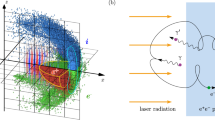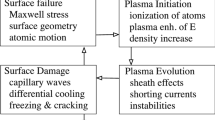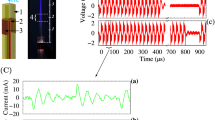Abstract
IN microwave breakdown of a gas, the amplitude of drift movement of an electron is small except at very low pressures, and the hypothesis has been made that the return of an electron over its previous track may help to initiate the discharge1. The experiments now reported deal with an attempt to convert the simple to-and-fro drift movement into a zig-zag movement, and to examine the effects of this on the stresses required to initiate breakdown.
This is a preview of subscription content, access via your institution
Access options
Subscribe to this journal
Receive 51 print issues and online access
$199.00 per year
only $3.90 per issue
Buy this article
- Purchase on Springer Link
- Instant access to full article PDF
Prices may be subject to local taxes which are calculated during checkout
Similar content being viewed by others
References
prowse, W. A., and Jasinski, W., I.E.E. Mono. No. 32 (1952).
Author information
Authors and Affiliations
Rights and permissions
About this article
Cite this article
PROWSE, W., LANE, P. Breakdown of a Gas subject to Crossed Electric Fields. Nature 172, 116–117 (1953). https://doi.org/10.1038/172116a0
Issue Date:
DOI: https://doi.org/10.1038/172116a0
Comments
By submitting a comment you agree to abide by our Terms and Community Guidelines. If you find something abusive or that does not comply with our terms or guidelines please flag it as inappropriate.



